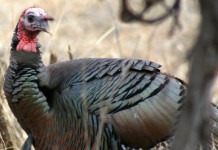The United States Geological Survey has confirmed that Lewisville Lake was found to harbor zebra mussels, making it the third lake in Texas, and the second within the Trinity River basin, where the invasive species has been discovered.
Christopher Churchill, a USGS biologist who has monitored for the mussels in North Texas rivers and reservoirs, discovered the live juvenile on a settlement sampler near the dam, according to a news release.
Churchill indicated that it is likely the result of contaminated boats being transported to Lewisville Lake, but it could be the result of downstream transport of zebra mussels from Lake Ray Roberts via the Elm Fork of the Trinity River. Also, this latest infestation appears to be relatively new as no additional specimens have been documented, according to the release.
The USGS, Texas Parks and Wildlife Department, University of Texas-Arlington and others continue to closely monitor for the spread of zebra mussels.
Zebra mussels can have economic and recreational impacts in reservoirs. They can clog public-water intake pipes, harm boats and motors left in infested waters by covering boat hulls and clogging water-cooling systems, annoy boat-dock owners by completely covering anything left underwater and can make water recreation hazardous because of their razor-sharp edges, according to the release.
With Lewisville Lake being such a popular boating destination there is a heightened risk of zebra mussels being transported to non-infested lakes by boaters. However, the spread can be slowed by making sure boats that operate in zebra mussel-infested waters are not used in any other body of water until they have been cleaned, drained and dried. In addition, TPWD adopted rules regarding the transfer of zebra mussel larvae in water from lakes Texoma, Lavon, Ray Roberts and Lewisville. To comply with these rules, boaters and anglers need to drain all water from their boats (including live wells) before leaving those lakes, according to the release.
From the environmental perspective, zebra mussels are filter feeders, which mean they compete with baitfish such as shad for available forage. Any impact on baitfish in turn can affect their predators — game fish such as bass, striped bass and catfish. Zebra mussels are harmful to native mussel populations because they will colonize on their shells and essentially suffocate them.
TPWD and a coalition of partners have reached out to boaters with an advertising campaign to educate them not to transport the tiny mussels or their microscopic larvae, which are invisible to the naked eye and can stay alive inside livewells, bait buckets and other parts of the boat for up to a week. These partners include: North Texas Municipal Water District, Tarrant Regional Water District, Trinity River Authority, City of Dallas Water Utilities Department, Upper Trinity Regional Water District, Sabine River Authority, Canadian River Municipal Water Authority, San Jacinto River Authority, Brazos River Authority, City of Grapevine, City of Houston, City of Waco and Lady Bird Johnson Wildflower Center.
Originally from the Balkans, Poland and the former Soviet Union, zebra mussels found their way to the Americas in the 1980s via ballast water of a ship, according to the release. The small invaders were first found in 1988 in Lake St. Clair, Mich., and are known to have infested 29 states and more than 600 U.S. lakes and reservoirs.
Visit the Texas Invasive website for more information.






















